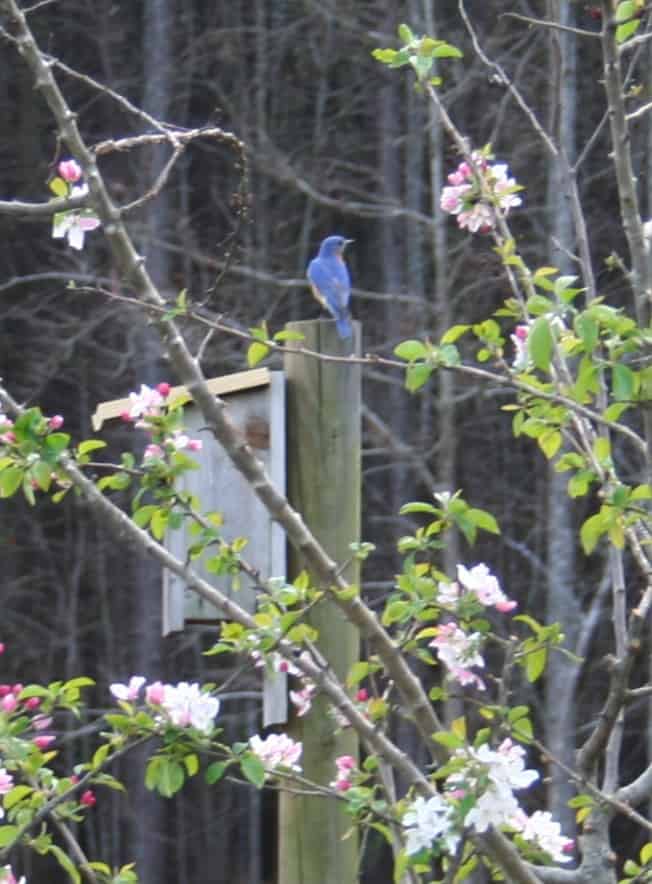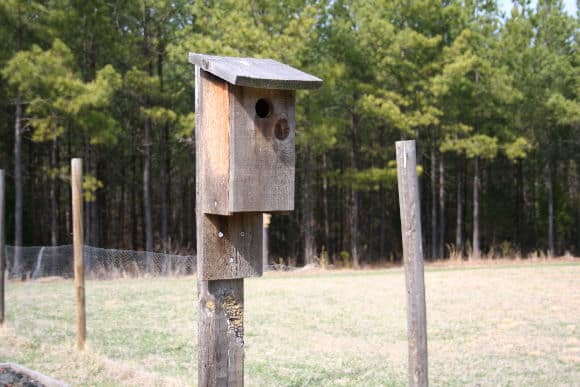This unseasonably warm winter means that many of the migrating birds didn’t migrate – or if they did, they sped back here in a hurry. We enjoyed watching huge flocks of robins whirl about the farmer’s field across the street each evening as we walked Shadow along the road. I’ve never seen so many robins in one flock. Back on Long Island, you’d see robins in the spring, hopping sedately along a verdant suburban lawn pecking at worms. They were a sign of spring like forsythia blooming among the foundation plantings, tulips, crocus and daffodils. Here in the countryside, it’s astonishing to see hundreds and hundreds of robins in one gigantic flock. They literally blot out bits of sky as they wing their way to a roosting spot in the evening. We saw them a lot in January and early February, and many would land in a big oak tree along the neighbor’s pasture. Now I’m starting to see just a few in the yard, but still many more than I would see in one location on Long Island.
We’ve noticed that the bluebirds are back, and we love those beautiful, friendly little birds. We have one cedar bluebird house hanging on the fence post by the vegetable garden, and it’s had a tenant ever since we first nailed it up. John made a whole bunch of bluebird houses last year and my friend Joan gave me one last year for my birthday. The homemade bluebird houses hanging on a pine tree and facing south had a tenant; the other two, which face east-southeast, were never occupied.
I can hear the liquid trill of their beautiful songs in the morning, which tells me they are here and spring isn’t far away. On Sunday, we decided to clean out the bird houses. John took the cordless drill and we unscrewed the side flaps. We removed the old nests and used a cloth to dust out the inside of the houses.
One thing you can often spot inside bird houses when you clean them is evidence of mice – but thankfully, no mice found our little birdhouses. Spiders and wasps, on the other hand, were plentiful (shudder.) I’m just glad we were cleaning the birdhouses in February and we could easily remove the wasp nest from one. The spiders, on the other hand, had already hatched out from their silken cocoon. There were tiny spiderlings sluggishly moving about inside the house. Trust me, I made John clean out THAT one!
If you haven’t done so, do clean out the birdhouses you can reach. We also painted the bird bath so that it is ready to go when April tell us the frost is a thing of the past!






